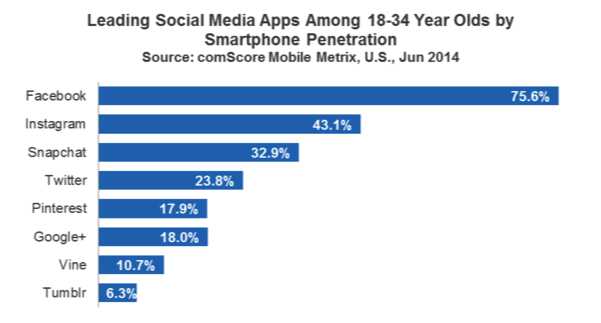3 Digital Platforms With a Promising Future
I have always admired innovators that are “ahead of the curve” when it comes to trends. Whether it’s Steve Jobs, Elon Tusk, or Henry Ford, forward-thinking people tend to have a lucrative place in history. After a semester of Digital Marketing with Katie Krueger, I tried to notice “innovative” trends that are taking place in marketing. Below I have listed three digital mediums that I believe will grow in the coming years. I hope that aspiring digital marketers will take note of these trends and start to think about the future of the industry.
- Virtual Reality- Without me telling you, Virtual Reality has a reputation of being futuristic, and until recently only existed in fiction. However, starting in August 2016, VR will be available to consumers. Oculus, HTC, Sony, and Microsoft all intend to join the VR market in 2016 or 2017. The Oculus Rift is the first VR system to hit the market, and carries with it opportunity for marketers.
 A marketing message in virtual reality would, quite literally, be placed in eyesight of consumers and offers a much more personal experience than any current platform. Whether its virtual advertisements, virtual product placements, or branded entertainment, Virtual Reality is a new frontier for marketers. Compared to traditional channels, (TV, radio, print) and online channels (banner ads, email, social media), virtual reality essentially introduces a new 3rd channel for marketers to exploit. It might take some time for marketers to access this platform, though, seeing how the going price is $599 for the Rift. Regardless, digital marketers should consider Virtual Reality a valuable new marketing channel.
A marketing message in virtual reality would, quite literally, be placed in eyesight of consumers and offers a much more personal experience than any current platform. Whether its virtual advertisements, virtual product placements, or branded entertainment, Virtual Reality is a new frontier for marketers. Compared to traditional channels, (TV, radio, print) and online channels (banner ads, email, social media), virtual reality essentially introduces a new 3rd channel for marketers to exploit. It might take some time for marketers to access this platform, though, seeing how the going price is $599 for the Rift. Regardless, digital marketers should consider Virtual Reality a valuable new marketing channel.
- Snapchat- Despite its questionable origins, Snapchat has grown incredibly in scope over the last four years. As an instant-photo and video App, Snapchat provides unique opportunities for marketers. A fair number of companies already make use of Snapchat’s “Discovery” snapstory option. Companies can create multi-page snapstories where users can access articles, videos, photos, and interactive graphics. Snapchat is an intriguing option to target young Millennials who frequently check their phones. Not to mention, Snapchat has already grown more popular than Twitter, Pinterest, and Vine for 18-34 year olds (as shown in the graphic above). Snapchat offers marketers a convenient way to access young consumers in a non-invasive way. By creating interesting content, marketers can captivate young users, and eventually condition these users to check their company’s content daily.
- eSports- Competitive videogame play, known as “eSports”, has grown rapidly thanks to online streaming. The eSports industry already has a larger following than the majority of traditional sports leagues. In 2014, eSports tournaments had more viewers than The Masters, the NBA Finals, The World Series, and The Stanley Cup. As you would guess, eSports consumers are young Millennials (and mostly male). However, eSports is unique in that it draws a diverse group of viewers from many different countries. China, South Korea, the United States, and Western Europe all have a significant eSports presence. Digital marketers can potentially access millions of consumers through eSports. Being largely online, marketers should advertise on eSports websites to benefit from this growing industry. By getting into the game early (pun intended), marketers can establish a relationship with eSports consumers, and benefit from an ever-growing fan base.
Jared Musel is a marketing major at the University of Wisconsin-Madison, graduating in May 2016. Whenever not studying or working, he enjoys anything involving sports, watching his TV shows, and laughing with friends. He hopes to land a job in the marketing field and test his creativity every day at work.






